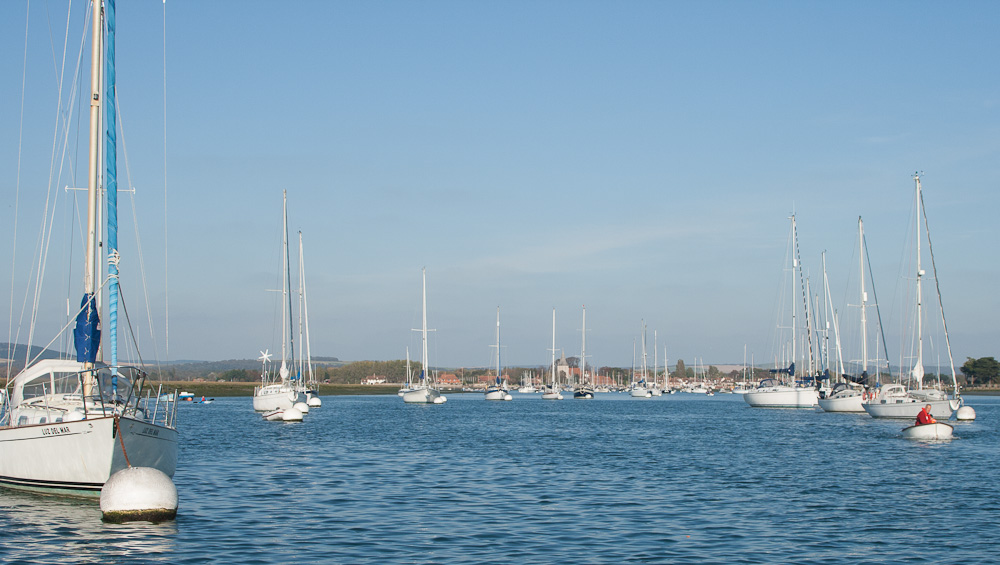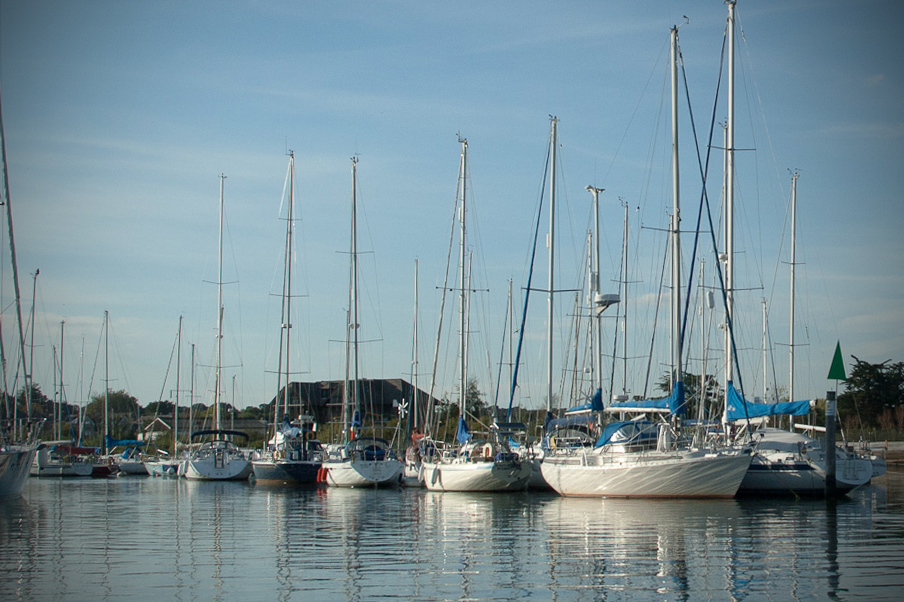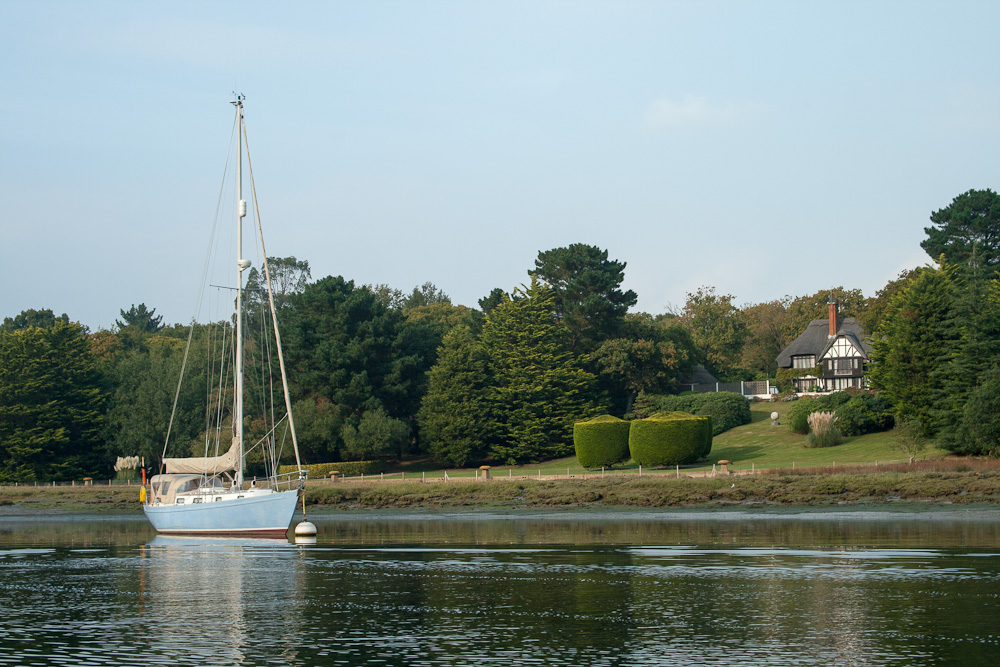Boat moorings: how to find the right one
Finding a mooring that’s both convenient and affordable is not an easy task. Rupert Holmes outlines the options and shines a spotlight on where to look.
If you’re lucky enough to have a big annual budget for boat ownership, then finding a convenient place to keep your boat should pose no problems. Plenty of high-profile marinas will be happy to take your money in exchange for a high level of service. But what if you don’t have the kind of budget for a full-service marina?
Unfortunately, many mooring providers still have a scant online presence, if any, thanks to a consistent demand for their services. Nevertheless, plenty of hidden gems around the country might offer a convenient and affordable alternative.
Jump to section
- Harbour Authorities
- Boat Yards & Clubs
- How Much Shelter?
- Types of Mooring
- Tips for Finding an Inexpensive Mooring
Harbour authorities
A quick look around harbours and estuaries will show plenty of boats on more economical moorings, but often provide little indication of who administers them and how to get in touch.
In most cases the first port of call should be the harbour master’s office. In many places – particularly harbours with limited commercial shipping – the harbour authority will be responsible for at least some of the leisure craft moorings on offer, and will frequently provide them at affordable rates.
It’s important to recognise that there may be specific restrictions on residency (i.e., you have to live within a certain radius of the harbour) or a long waiting list in the most popular locations, such as the Solent, Cornwall, and some parts of the East Coast. Since 2020 and the global pandemic, there has been a substantial rise in boat ownership in the UK as individuals seek out ways to get outdoors and escape crowded towns/cities, with boating offering the perfect solution.
And while it’s great to see more people discovering the joys of life on the water, this has meant that many harbours are at capacity and unable to accept new vessels long-term.

Mid-river pontoons will vary in cost depending on how far from the nearest dinghy launching point they are.
Boat yards and clubs
While by no means universal, there are hundreds of boatyards, plus sailing and boat clubs around the country with long-standing rights to lay moorings in “their” waterways. Often, boating clubs offer the cheapest option for moorings, with annual prices starting from as little as what a marina berth might cost for a fortnight (see: Yacht club or sailing club: choose the right one and 14 of the best UK sailing clubs).
Rates vary depending on the club, with those where the members are required to carry out some of the work generally offering the lowest overall prices.
How much shelter?
While it may appear obvious that a mooring should be in sheltered waters, the degree of shelter offered varies tremendously, both between different ports and even different parts of the same harbour or estuary. This has an important bearing on a number of factors – some moorings are “summer only”, with boats needing to go ashore or be accommodated elsewhere outside the main boating season, when the strongest gales and storms tend to be experienced.
This is also an important consideration if you will need to reach the boat by dinghy – for this to be safe, a certain amount of shelter is essential to avoid capsizing or too great a risk of falling between the dinghy and the boat when boarding (see: How to pick the perfect inflatable tender).
Finally, what is the risk of the boat being damaged while moored? In reality much can be done to mitigate this, using additional mooring lines, protecting against chafe and having plenty of oversize fenders, but it’s important to analyse this aspect in advance. (If your boat is damaged, see our article on boat damage: how to handle it safely.
Types of mooring
Before approaching mooring providers it’s important to have an understanding of the terminology used so you can have a better grasp of what’s on offer.
Swinging mooring – a traditional mooring in which the boat is secured only by its bow, allowing it to swing to face into either the wind or current.
Pile mooring – a pair of substantial wooden or metal posts between which the boat is secured, with the bow tied to one and the stern to the other. (Not sure which is the ‘bow’ and which is the ‘stern’? Check out our article on boat terminology that will have you navigating your ship like a pro)
Fore and aft mooring – as with a pile mooring, both ends of the vessel are secured, but they are tied to floating buoys, rather than wooden or metal posts.
Drying mooring – a mooring that will be only be accessed for part of each tidal cycle. The boat must therefore be of a type that can dry out safely, such as a flat-bottomed hull or a bilge keel (learn more about keels here).
Half tide mooring – similar to a drying mooring, but with enough depth for most boats to remain afloat for at least half of each tidal cycle. Of course, whether you can stay afloat will vary depending on the tide (spring or neap) and your draft. The authority responsible for a half-tide mooring will be able to provide more details on whether your specific boat will stay afloat during your visit.
Deep water mooring – a mooring that never dries out. However, it’s important to check that there will be sufficient depth for your boat at low water on big spring tides.
Pontoon berth – as the name suggests, this is a berth on a pontoon. These moorings may be in a marina with walk-ashore access or out in a harbour or river with access to shore, which is only possible via dinghy or water taxi.
Finger berth – short and narrow pontoon berth in a marina, generally sized for individual boats.
Mud berth – a berth in which most boats will remain aground for most of the tidal cycle and sometimes even at high water on small neap tides. Mud berths tend to be favoured by the “financially challenged”, but they may also be used for laying up boats of traditional timber construction or purposely drying out a bilge keel vessel for maintenance while avoiding high haul-out costs.

Some harbours offer seasonal moorings only. This is cheaper – as long as you have somewhere to keep the boat in winter.
Tips for finding an inexpensive mooring
- Drying and half-tide moorings are invariably cheaper than deep water options. This doesn’t automatically exclude walk-ashore access, as there are a number of small marinas with drying berths that still offer walk-ashore access, such as Bridlington Harbour. If you have long enough lines, a harbour wall might also offer easy access to shore via a ladder even when the tide drops and the boat is dried out.
- Generally speaking, the easier a mooring is to reach the more expensive it is. Therefore, a longer dinghy trip, or a location that’s further from open water will save you money. This applies just as much in the busy Solent area as it does in less popular locations.
- Get your name on a waiting list as soon as possible. Some harbour authorities and clubs operating in prime areas operate a waiting list. In most cases you don’t need to have already bought a boat to be eligible to join the list – and the sooner you do so, the earlier your name will come up.
- Don’t underestimate what you might learn by simply asking around – in many places there are more options than might appear to be immediately obvious. Other boat owners are clearly good for advice, as are water taxi operators and so on.
- Finally, if you’re buying your first boat don’t panic about where to keep it. Granted, you need to know you will have a safe home for it before committing to buy, but your knowledge will expand considerably during the first year or two of ownership, as will your connections in the boating world and your understanding of what your boat needs and what you’re willing to compromise on when it comes to the perfect mooring.
Editor's note: This article was originally published by Rupert Holmes in December 2020 and updated by Pippa Shaw in September 2024.
















